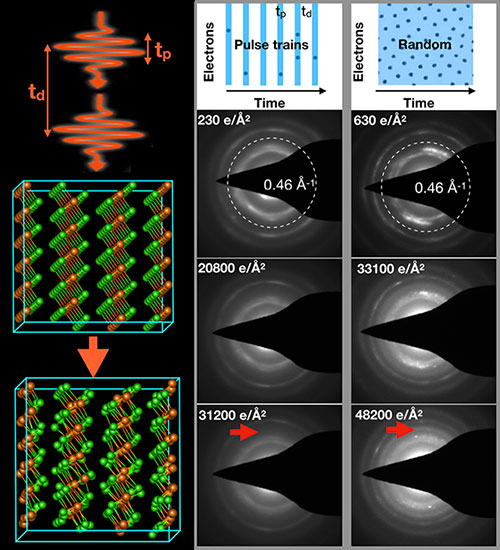
Scientific Achievement
A team of Foundry scientists and industry users have developed a method to apply picosecond pulsed-electron beams to image a beam-sensitive material with atomic resolution.
Significance and Impact
This is the first time that beam-sensitive and air-sensitive magnesium chloride has been studied with atomic resolution. The new technique could be used to study other soft materials and could aid the development of sustainable plastics.
Research Details
- Magnesium chloride is widely used as a support structure for making plastics, but is difficult to study because it exists in two slightly different crystal structures and is easily damaged.
- The researchers used a pulsed electron beam in a modified electron microscope at Eindhoven that allowed the samples to withstand higher doses of electrons and were able to image the atomic structure. These images were compared to results from microscopes at the Foundry and Dow.
- The team found that the accumulation of atom vibrations caused by electron beams is a factor in causing sample damage in addition to the physical bombardment of electrons. By pulsing the beam in time with these vibrations, the material is able to “recover” and maintain its original atomic structure.

